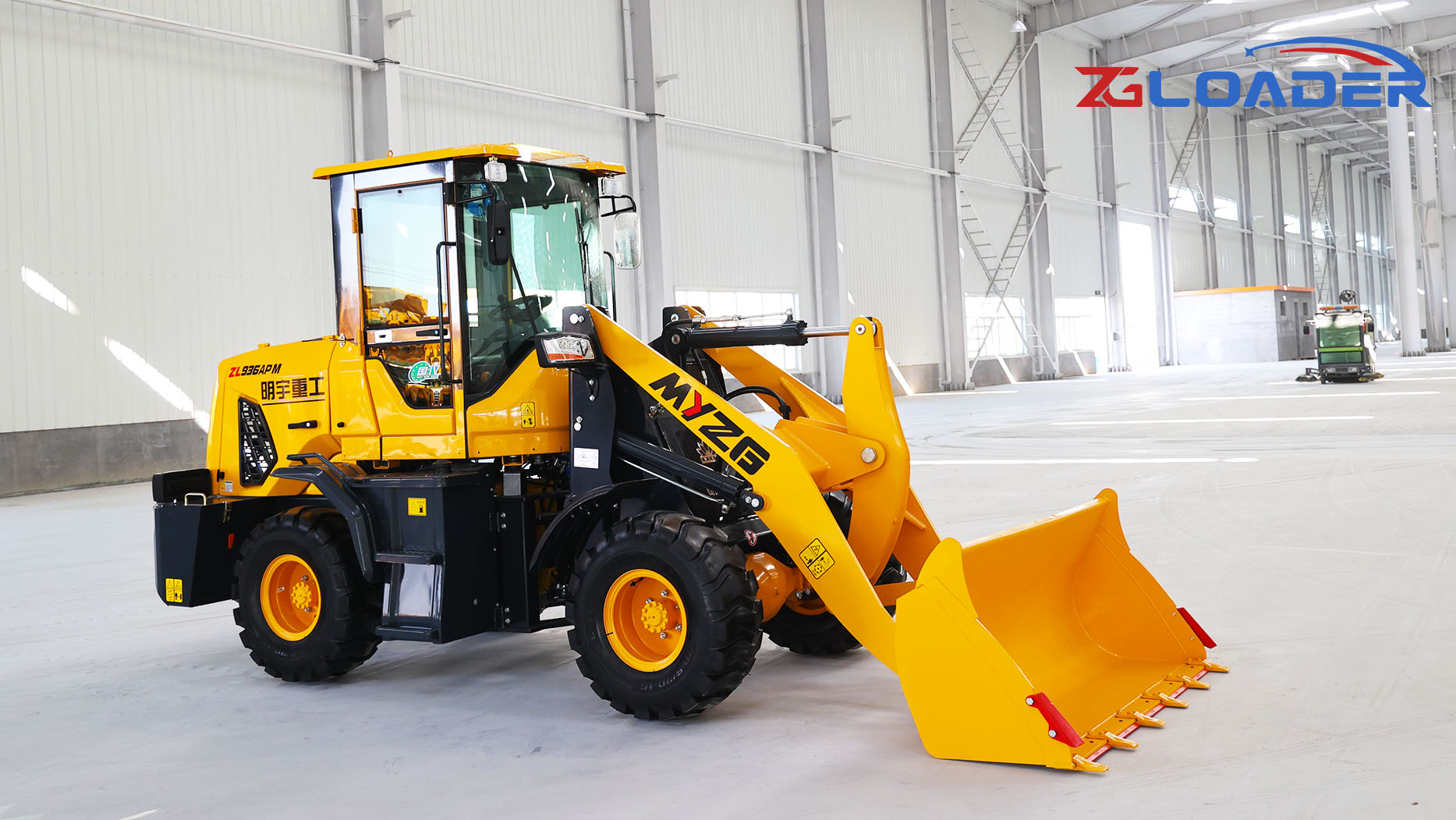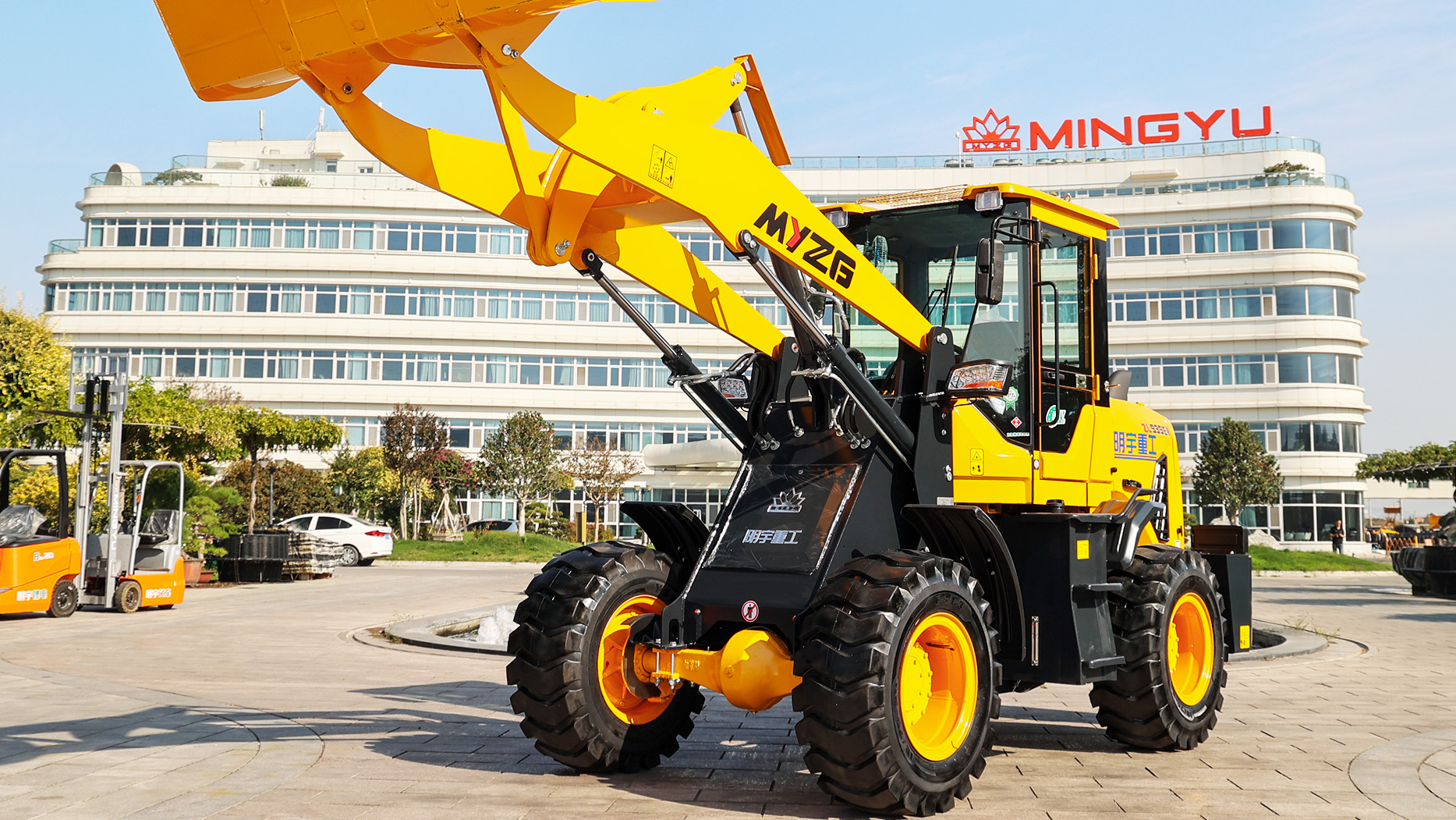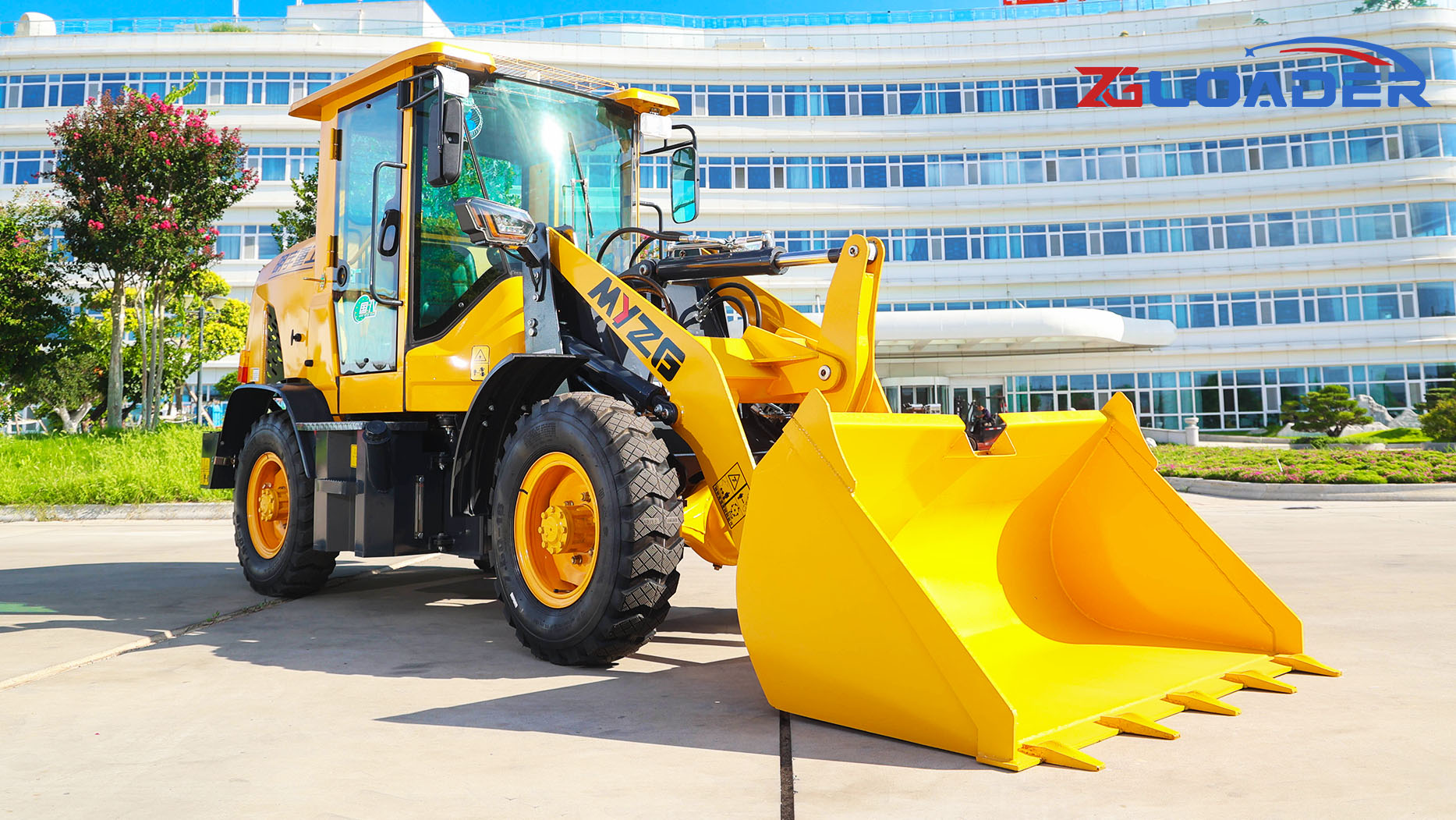1. Introduction
In the world of heavy machinery, tractors and loaders are two of the most common and indispensable machines. These machines serve critical roles in a variety of industries, ranging from agriculture and construction to landscaping and material handling. However, despite their common use, many people struggle to differentiate between the two. While they may seem similar at first glance, tractors and loaders are designed with different purposes, features, and capabilities in mind.
This article will explore the key differences between a tractor and a loader. We will examine their individual functions, designs, and typical applications. By the end of this article, you’ll have a clearer understanding of which machine is suited for specific tasks and industries, helping you make a more informed decision when selecting equipment for your business or project.

A tractor is a powerful, versatile machine primarily used for agricultural tasks but also widely used in construction and other industries. Tractors are designed to provide high pulling power, which makes them effective for tasks such as plowing, tilling, planting, and hauling.
Key Components of a Tractor:
Engine: The heart of the tractor, providing power for various tasks.
Wheels/Tracks: Tractors can either have wheels or tracks, depending on the type. Tracks offer better traction and are typically used in more rugged terrains.
Attachments: Tractors can be fitted with a wide variety of attachments, such as plows, mowers, and harrows.
Common Uses:
Agriculture: Tractors are most commonly associated with farming and are used for tilling, plowing, planting, harvesting, and hauling.
Construction: In construction, tractors are used for site preparation, material hauling, and other tasks that require pulling or lifting.
Landscaping and Forestry: Tractors are also used for land clearing, transporting materials, and more.
Types of Tractors:
Utility Tractors: Versatile and used for light to medium-duty tasks like mowing or hauling.
Row Crop Tractors: Specifically designed for row crop farming, equipped for tasks like plowing or planting.
Industrial Tractors: Built for heavy-duty tasks in construction, mining, and material handling.
3. What is a Loader?
A loader, also known as a bucket loader or front-end loader, is a heavy-duty piece of machinery designed primarily for lifting, digging, and moving materials like dirt, gravel, and debris. Loaders are usually equipped with a large, hydraulic bucket attached to the front, which allows them to scoop, lift, and carry large quantities of material.

Key Components of a Loader:
Hydraulic System: The hydraulic system powers the lifting arms and bucket, allowing for smooth and efficient material handling.
Bucket/Arm: The bucket can be swapped for various attachments, such as forks, grabs, or even snowplows.
Wheels/Tracks: Loaders typically feature either rubber tires for smoother surfaces or tracks for better traction on rough, uneven terrain.
Common Uses:
Construction: Loaders are commonly used on construction sites to move large volumes of material, such as dirt, gravel, and debris.
Demolition: In demolition, loaders are used to clear debris and load waste into trucks.
Material Handling: In industrial settings, loaders are used for stacking, lifting, and transporting heavy materials.
Types of Loaders:
Wheel Loaders: These are the most common type and are equipped with large wheels, making them highly maneuverable on solid surfaces.
Track Loaders: These loaders use tracks instead of wheels, allowing them to handle rougher, uneven surfaces.
Skid-Steer Loaders: Compact, versatile loaders with a unique turning mechanism that allows them to operate in tight spaces.
4. Key Differences Between a Tractor and a Loader
Functionality
Tractors: Primarily designed for pulling, towing, and agricultural tasks. Tractors can be used for plowing, tilling, or hauling, but they are not optimized for lifting or loading materials.
Loaders: Specially built for lifting and carrying materials. Loaders are ideal for construction sites, demolition tasks, and other heavy lifting applications.
Design
Tractors: Tractors are typically equipped with a high-torque engine for pulling heavy loads, and they can be fitted with a variety of attachments such as plows, discs, or harrows.
Loaders: Loaders are built with a front-mounted bucket that can be raised or lowered using a hydraulic system. They are designed for moving materials efficiently and are less versatile in terms of attachments compared to tractors.
Power Sources
Tractors: Often powered by diesel engines that provide high torque for pulling. The engine size and horsepower vary depending on the type of tractor.
Loaders: Loaders are also powered by diesel engines, but they typically require more horsepower to handle the lifting demands of the bucket and other attachments.
Maneuverability
Tractors: Tractors are designed for stability and can handle rough or uneven terrains. They are often less maneuverable than loaders but are better suited for working over large, open areas.
Loaders: Loaders are typically more maneuverable, especially skid-steer loaders, which can turn in tight spaces. However, they are not as stable as tractors on uneven ground.
Size and Weight
Tractors: Generally larger and heavier than loaders, especially industrial and row crop tractors. They are designed to carry heavy implements like plows, discs, or mowers.
Loaders: Loaders tend to be more compact, particularly skid-steer models, which are designed for operation in tight spaces. However, larger loaders can be just as heavy and powerful as tractors.
Versatility
Tractors: Tractors can be fitted with a wide range of attachments, from mowers to tillers, making them highly versatile for agricultural and construction applications.
Loaders: While loaders are excellent for lifting and moving materials, they are generally not as versatile as tractors when it comes to different farming or construction tasks.
5. Tractors vs Loaders in Different Industries
Agriculture
Tractors: Tractors are an essential tool for farmers, as they can handle a variety of tasks such as tilling, planting, and hauling. They can be used to attach equipment like plows or seeders to carry out critical farming operations.
Loaders: While loaders are useful on farms for transporting material or cleaning out barns, they are not as commonly used for fieldwork or planting.
Construction
Tractors: Tractors can be used in construction for earth-moving tasks, such as digging foundations, but are typically less useful for material handling on construction sites.
Loaders: Loaders are indispensable on construction sites, used for lifting and moving materials like dirt, sand, gravel, and debris. They are much more effective at these tasks than tractors.
Landscaping and Forestry
Tractors: Tractors are used in landscaping for tasks such as mowing large areas of land, hauling logs, and pulling trailers.
Loaders: In forestry, loaders are used to load logs onto trucks, move debris, and handle bulk materials.
Mining and Demolition
Tractors: In mining, tractors can be used to pull heavy equipment or materials. However, their role is more limited compared to loaders.
Loaders: Loaders are vital in mining and demolition, as they are designed to scoop and move large amounts of material, clear debris, and load waste.
6. Advantages and Disadvantages of Tractors
Advantages:
Versatile with a wide range of attachments
Excellent for pulling and towing heavy loads
Powerful engines designed for long-lasting performance
Disadvantages:
Less effective for lifting or moving materials
Less maneuverable compared to loaders
Typically slower and bulkier than loaders
7. Advantages and Disadvantages of Loaders
Advantages:
Excellent for lifting and moving materials quickly
High mobility and maneuverability, especially in confined spaces
Available in various sizes, from compact skid-steers to larger, more powerful models
Disadvantages:
Less versatile for tasks beyond material handling
Higher operating costs for heavy-duty models
Limited use in tasks like plowing or tilling
8. Which One is Right for Your Operation?
When choosing between a tractor and a loader, it’s important to consider the specific tasks you need to accomplish. If your primary needs involve lifting, carrying, and moving materials, a loader is the best choice. However, if you require a machine that can handle a variety of agricultural tasks, a tractor would be more suitable.
9. Future Trends and Innovations
Both tractors and loaders continue to evolve with advancements in technology. Electric versions of these machines are becoming more common, as manufacturers push to reduce emissions and fuel consumption. Autonomous and robotic tractors and loaders are also on the rise, promising to revolutionize the way these machines are operated and maintained.
10. Conclusion
While both tractors and loaders serve distinct purposes, they are both invaluable pieces of machinery across various industries. Tractors are versatile, powerful machines designed for pulling and a wide range of farming tasks, while loaders excel at lifting and moving materials efficiently. Understanding the key differences between the two will help you choose the right equipment for your specific needs. Whether you’re in agriculture, construction, or another industry, both tractors and loaders are essential tools for modern-day operations.
Post time:Apr.21.2025

